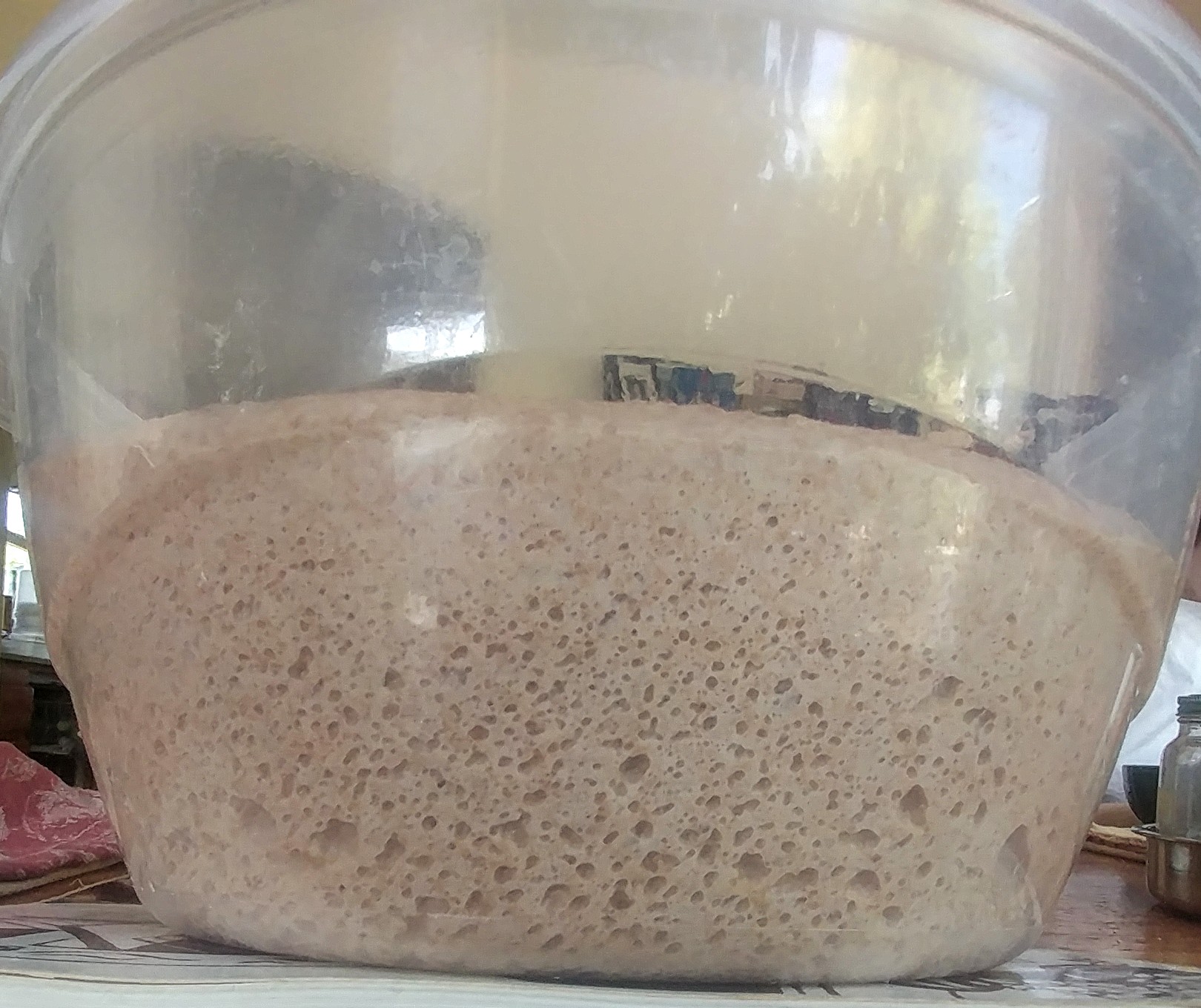
Sourdough Starter Ratios, House Temperature, and other stuff
I'd consider myself an intermediate level baker. Probably baked about 300 loaves by now. I still have so much more to learn. I realized recently one major mistake I have been making... I haven't been very nice to my sourdough starter.
First, let me go over my understanding of a sourdough starter, then, I'd like to ask a few clarifying questions.
My Understanding thus far:
How to maintain a sourdough starter from a high level.
- Mix sourdough seed from previous batch with water and flour, walk away.
- A few hours later when the rising dough has peaked. Peaking migh tbe 1.5x, 2x, 3x, even 3.5x the volume depending on how strong the sourdough culture is and how wet the sourdough is.
- Start over with step 1.
In order to adjust the time to the 'peak' to better align with someone's schedule the following items can be tweaked
- Higher/lower temperature of air outside of sourdough container
- Less/more percentage of sourdough seed compared to flour/water.
My Issues/Questions:
- The Sourdough peaks way too fast, even though I have reduced the sourdough seed ratio considerably... 15g:100g:115g (seed:hard white wheat:well water) peaked in about 4 hours at 78dF. I am setting up a time lapse camera so I can nerd out on this... I tend to get busy and forget to check the starter. Is there a danger to reducing the seed ratio too much? I just started a new batch with the following ratio 7g:100g:115g.
- The sourdough only peaks at about 1.8x the original volume. We have been feeding the sourdough starter with a 1:1:1 ratio every 12 hours for most of its life (until just recently). My theory is that 12 hours was always way too long of a wait for the 1:1:1 ratio and that the sourdough has not yet been allowed to reach its full potential because of the very late feeding. Do you all concur with my theory?
- I really struggle with staying on top of the amount of daily sourdough discard. Right now my (as you can see above) my sourdough is about 225g fed twice a day. But... is there any reason I couldn't drop it to 100g or even 50g? And then, if I want to make bread, the day before I could make a bigger batch OR the day before split off a bit for a seperate levean dedicated the loaf I plan on baking?
- It seems like 90% of the articles on the internet (even on King Arthur flour) recommending a 1:1:1 ratio for sourdough feedings. In my household... this seems WAY WAY WAY too high, especially since a lot of these instructions suggest feeding every 24 hours. Am I missing something? My house is usually 72dF to 80dF depending on the season. Is a 1:1:1 ratio ever a good ratio? Are 90% of the internet instructions mostly wrong?
- In general, am I on the right track to perfecting my sourdough?












